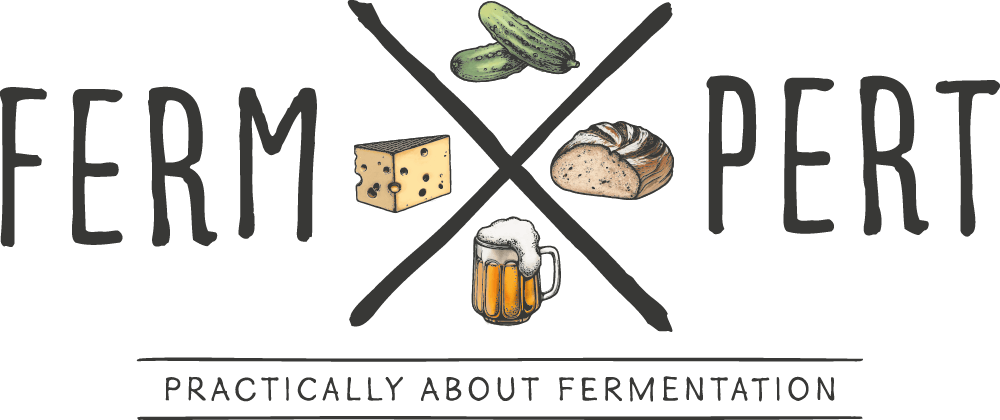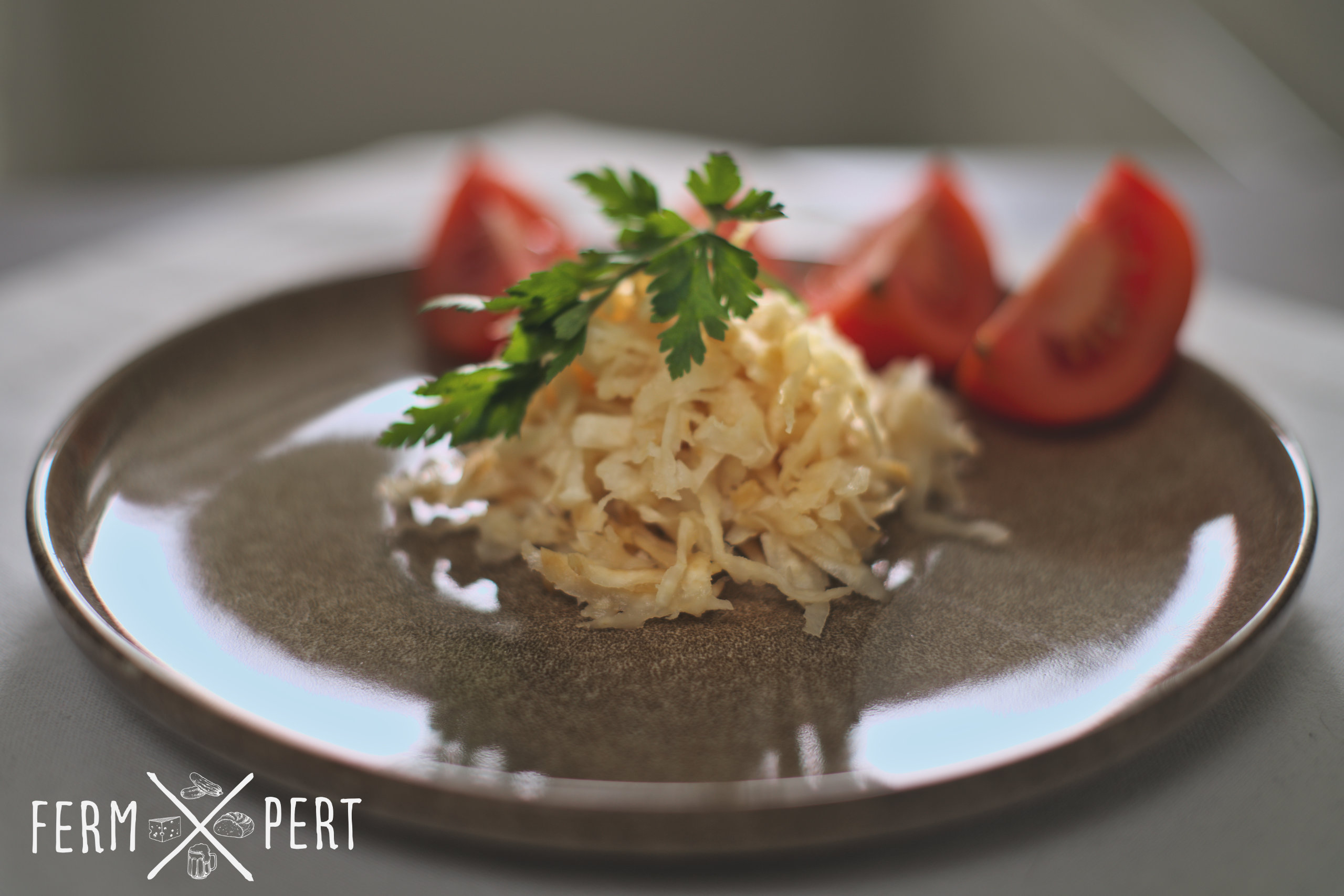Celeriac, also known as celery root, has a unique flavour and at least in Polish cuisine it’s usually an ingredient of broth. Some use it to make a salad, but I like it most when it’s fermented.
Recipe
The proportions given below are for exactly 1 kg, but obviously, they will depend on the mass of the celeriac. Salt should be 2-3% of the total mass.
- 975 g celeriac, peeled
- 25 g salt
Shred the celeriac and salt it. Mix so that salt is distributed evenly. Pack tightly in a jar and add on top a fermentation weight and/or a slice from the middle of the root. The jar’s contents should be completely submerged under the brine from celeriac juice. Ferment at room temperature for at least five days.
Additional Information
The way the celeriac is cut or shredded doesn’t make a difference from the fermentation’s perspective. It can be shredded on a fine or coarse grate, as well as diced or julienned. I choose to use a grater because I find the result the most appropriate on sandwiches or alongside a hot dog.
Video Transcription
In my experience, celeriac is a bit of a polarising vegetable. It has a unique flavour that not all people are fond of. I happen to like it, so it was just a matter of time before I tried fermenting it. The recipe, as usual, can be found on the blog.
I have a large celeriac here. I’ll start by peeling it. This may sometimes be slightly difficult, especially around the roots on the bottom. A paring knife is needed. I cut a slice from the middle. I’ll need it later. I slice the rest into manageable chunks and shred them using a grater. I sprinkle salt over the shredded celeriac. I have four chunks so I use about a quarter of the prepared amount of salt. I give everything a rough mix to more evenly distribute the salt.
The next step is to transfer the shredded celeriac into a jar. I don’t wait for the salt to draw moisture out of the shreds. It’ll do it in the jar. I pack the shreds as tightly as possible. Once the jar is full enough, I take the slice I saved at the beginning and use it to hold the shreds underneath. I need to trim it a bit. It’s in, and I can see that the salt has already done its job. The celeriac is completely submerged in its own juices. This will make sure no mould can form on the floating bits. I like to add a fermentation weight but the slice on top would have probably been enough. Then I close the jar and I’m done.
I’ll keep the jar at room temperature for a few days. The lactic acid bacteria present in the celeriac will gradually colonise the brine and convert the naturally occurring sugars into lactic acid.
This fermentation isn’t too vigorous, so I let the jar sit for at least five days to a week before opening it. The bubbles on top of the brine indicate that it’s still fermenting. The aroma is exactly as can be expected: slightly sour, but the unique celeriac smell is very clearly present. The taste is very similar. There’s no residual sweetness since the celeriac was low in sugars to begin with. Instead, there’s a subdued lactic sourness and of course the celeriac flavour. I think this is a great side dish and a sandwich relish. Yum!

